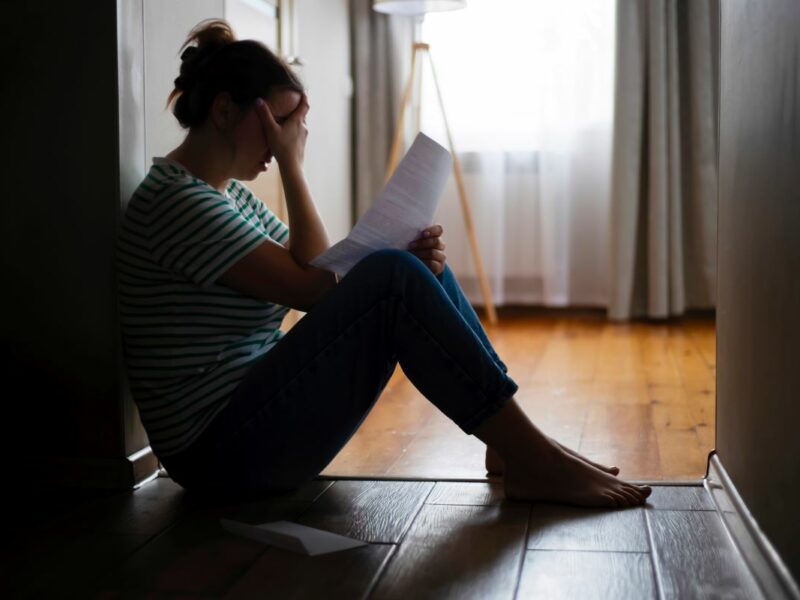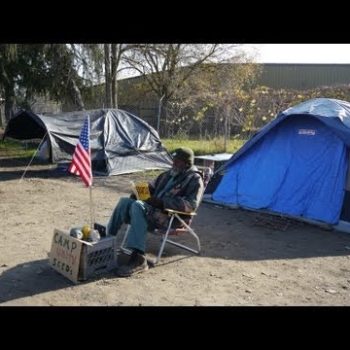Study Reveals Urgent Need for Affordable Housing Solutions, Specifically for Seniors, as Incomes Remain Stagnant
According to a new study, home prices are rising at nearly twice the rate of the U.S. median income. That is putting millions of Americans at risk of becoming homeless.
The study found that the average American home-price-to-income ratio has grown to 5.8 nationwide since 2000. As of October, the U.S. median home price was roughly $433,000 compared to the median household income of $74,580.
For comparison, financial experts suggest buyers spend no more than 2.6 times their income when purchasing a home. Home prices would need to fall about 32% to $294,000 nationwide for someone earning the median income to afford a home, the study added.
The study, which was conducted by real estate data firm Homebay, also paints a picture of the financial conditions that are driving the rapid increase in homelessness the U.S. has seen since the pandemic. For instance, Yahoo News reported that Baby Boomers are falling into homelessness at rates not seen since the Great Depression in the 1920s.
A similar story can be told about people aged 65 or older.
Estimates from the National Alliance to End Homelessness project that the number of older adults experiencing homelessness will grow from 40,000 to about 106,000 by 2030 because of high home prices and limited social safety net resources.
“With home prices growing 2.1x faster than income since 2000, Americans struggle to find properties they can comfortably afford to own,” the study reads in part.
While many analyses of the U.S. housing market’s unaffordability focus on the run-up of home prices following the pandemic, the study suggests that the issue has been brewing for at least two decades.
Between 1985 and 2022, the study found that U.S. median home prices climbed by 423% while median income increased by 216%. One reason for the sharp increase in home prices is that construction activity slowed down following the Great Recession in 2007, leaving many homebuilders with inventory they couldn’t sell.
Meanwhile, wage growth stagnated as employers began shifting toward flexible pay-setting practices in the 1980s, according to the American Economic Association. This shift caused wages for non-trades workers like janitors and food service workers to decline much faster than trades workers like electricians and mechanics.
The pandemic exacerbated these issues, which “supercharged” the disparity between home prices and wages. The disparity is also why about 72% of renters said in an April survey that they don’t expect to buy a home in their lifetime.
“Entire generations have struggled to afford homes, but supercharged home prices in recent years have become a much bigger problem for young buyers,” the study said.
Homebay also found that no metro areas have a home-price-to-income ratio at the recommended 2.6 level. The most affordable city the study mentions is Pittsburgh, which has a ratio of 3.2.
On the other side of the spectrum, the study found the most unaffordable housing markets were primarily concentrated in California. The top four most unaffordable markets were San Jose, San Francisco, San Diego, and Los Angeles, respectively. Each market had a home-price-to-income ratio above 9, the study found.
The rapid increase in home prices mixed with a sour capital market has also wrought several issues for current homeowners.
For example, increasing home prices are almost always accompanied by rising property taxes, which can burden elderly homeowners on fixed incomes. Persistent inflation has made this issue even more dire for fixed-income households because of the high food and energy costs.
The latest Household Pulse Survey from the Census Bureau shows that more than 1 million households are either “very” or “somewhat likely” to have their home foreclosed on over the next two months. About one-quarter of that total comprises people aged 55 and older. Nearly 80% of that total comprises people earning less than $75,000 annually.
The Biden-Harris administration has launched efforts to boost the supply of affordable housing nationwide and set a goal of reducing homelessness by 25% by 2025.
Several states have also started programs aimed at keeping seniors in their homes, like mortgage forbearance programs and providing rental assistance. However, it remains to be seen if these efforts will bear fruit, given the sharp increase in home prices.
“We’ve gotten very, very good at providing supportive housing for people,” U.S. Interagency Council on Homelessness Executive Director Jeff Olivet told NPR. “We’ve not done a great job as a nation of turning off the faucet.”
How You Can Help
Now is not the time to be silent about homelessness in the United States or anywhere else. Unhoused people deserve safe and sanitary housing just as much as those who can afford rent or mortgage.
Poverty and homelessness are both policy choices, not personal failures. That’s why we need you to contact your officials and tell them you support legislation that:
- Streamlines the development of affordable housing
- Reduces barriers for people experiencing homelessness to enter permanent housing
- Bolsters government response to homelessness
Together, we can end homelessness.













